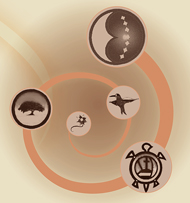
Blending Traditional and Western Approaches
By Rebecca A. Clay
A Circles of Care grant gave Arizona’s Pascua Yaqui tribe a chance to take a “snapshot” of what behavioral health services were available for the tribe’s youth and how families and young people themselves felt about those services. The resulting picture wasn’t pretty, said Raquel E. Aviles, who served as project director for the 2001 to 2004 grant.
At the time, only a third of providers were tribal members. Non-Native providers thought that families who missed appointments just didn’t care, when the reality was they couldn’t take time off work. And providers and consumers had very different ideas, including about therapy itself.


Equine therapy uses horses to help young people learn patience, team building, and social skills.

“The youth didn’t want to be inside an office one on one,” said Ms. Aviles, now a management assistant for the tribe’s health department.
In the new model the tribe developed, art and musical expression supplement traditional therapy. Care advocates—staff members who provide intensive case management—do whatever it takes to support families, from coordinating care to taking them grocery shopping if they lack transportation. Youth who have been through the system serve as peer mentors who help newcomers walk through the treatment process.
There’s even an equine therapy program that gives youth a chance to learn about decision making, drug prevention, and other life skills with a horse as a partner. “The horse is the mirror of the youth’s feelings,” said Ms. Aviles, explaining that participants choose horses that represent themselves. “The focus isn’t on riding; it’s on caring for the horse and working through tasks with the horse. The horse is your partner.”
The goal? To blend the best of western and indigenous healing traditions.
Exemplifying that approach is a chart the tribe uses to explain the stages of change to young people receiving behavioral health services. “Youth in the behavioral health system said they felt stuck, like nothing was happening,” explained Ms. Aviles. “The chart shows the stages of change, but it uses Yaqui symbolism to show the youth that they’re on a journey.”


A graphical representation of the stages of changes using Yaqui symbolism.

That journey takes young people from the precontemplation stage represented by the moon through the determination, action, maintenance, and completion phases, represented by the turtle, mesquite tree, and hummingbird. The final stage is symbolized by the sewa, or flower. “That,” said Ms. Aviles, “is your life in bloom.”